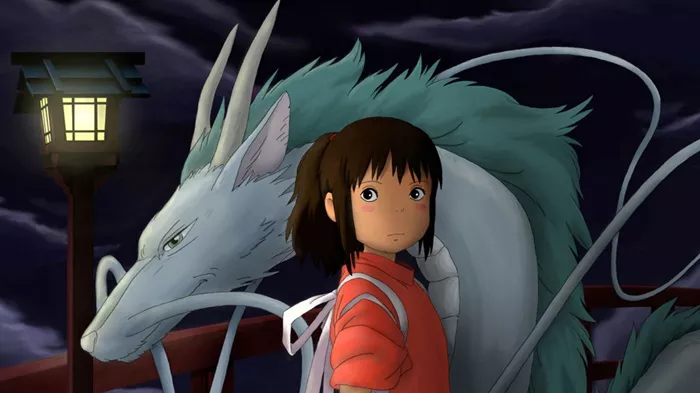Since its release in 2001, “Spirited Away” by Studio Ghibli and its esteemed director, Hayao Miyazaki, has captivated audiences around the globe with its rich storytelling, intricate animation, and deep thematic elements. While the film is widely recognized as a work of fantasy, many viewers and critics alike have pondered whether underlying truths or real-life inspirations are woven into its narrative fabric. This article explores the connections between “Spirited Away” and real-world influences, examining how historical, cultural, and personal elements are integrated into its storyline and setting.
Understanding the Plot of Spirited Away
Synopsis
“Spirited Away” follows the story of a young girl named Chihiro who, while moving to a new neighborhood, stumbles upon a mysterious, abandoned amusement park. She soon discovers that this place is a resort for supernatural beings who need a break from their time spent in the earthly realm. When her parents are turned into pigs by a witch named Yubaba, Chihiro must work in Yubaba’s bathhouse to find a way to free herself and her parents and return to the human world.
Themes and Symbolism
The film is replete with themes of greed, environmentalism, identity, and the transition from childhood to maturity. These themes are symbolized through various characters and narrative arcs, providing a rich tapestry that invites viewers to look beyond the surface of its fantastical elements.
Historical and Cultural Inspirations
Japanese Shinto Beliefs and Spirituality
“Spirited Away” heavily draws on elements of Shinto, a major religion in Japan that emphasizes the worship of kami (spirits associated with natural elements and beings). The film portrays numerous kami, each with unique traits and backgrounds, reflecting the Shinto belief in the sacredness of nature and all living and non-living things. The bathhouse serves as a place of purification, a concept central to Shinto ritual practices.
Japanese Folklore and Mythology
The narrative incorporates various creatures and spirits directly lifted from Japanese folklore. For example, the river spirit cleansed by Chihiro is reminiscent of stories where spirits or gods disguise themselves to test humans. The character No-Face, who mimics the behaviors and traits of those around him, can be seen as a reflection of the folklore surrounding shape-shifting spirits.
Real-Life Inspirations Behind the Characters
Chihiro’s Journey and Real-World Parallels
Chihiro’s transformation from a sulky, reluctant child to a capable, courageous young woman mirrors the adolescent journey towards maturity. Miyazaki has stated in interviews that Chihiro’s character was inspired by the daughter of a friend, making her experiences and growth a direct reflection of real adolescent challenges and triumphs.
Yubaba and Traditional Archetypes
Yubaba, the antagonist who runs the bathhouse, embodies the archetype of a witch and a stern matron but is also depicted with complexity and depth. Her character could be viewed through the lens of traditional Japanese and universal storytelling tropes, where figures of authority challenge the protagonist, forcing growth and self-discovery.
Miyazaki’s Personal Influences and Philosophies
Miyazaki’s Childhood and Experiences
Hayao Miyazaki’s work is often autobiographical. Elements of his childhood in post-war Japan, his views on environmentalism, and his disdain for greed and consumerism permeate the narrative. For instance, the polluted river spirit reflects his environmental activism and concerns about pollution in modern Japan.
The Impact of Japanese Economic Conditions
The setting of the abandoned theme park in “Spirited Away” serves as a critique of the economic bubble of the 1980s in Japan, which led to many such real-life constructions being abandoned when the bubble burst in the 1990s. This adds a layer of socio-economic commentary to the film’s seemingly fantastical setting.
Setting and Symbolic Locations
The Spirit World as a Reflection of Real Locations
The bathhouse in “Spirited Away” is believed to be inspired by the historic Edo-period bathhouse in the town of Shima, Japan, where Miyazaki once stayed. The intricate design and bustling nature of the bathhouse reflect traditional Japanese architecture and the communal aspect of bathhouses.
Environmental Settings
The film’s settings, from lush landscapes to polluted rivers, echo real-world locales and issues in Japan, emphasizing the interconnectedness of the environment, spirituality, and human impacts on nature.
Conclusion
While “Spirited Away” is not based on a true story in the literal sense, it is deeply rooted in real-life influences that range from Japanese cultural practices to historical events and personal experiences of its creator. Hayao Miyazaki masterfully weaves these elements into the film’s narrative, making it a rich tapestry of cultural education and moral lessons, all while wrapped in the guise of a child’s fantastical adventure. This interplay between the real and the surreal allows “Spirited Away” to resonate on a universal level, offering insights and reflections that transcend its animated form and fantastical plot, grounding its magic very much in reality.

